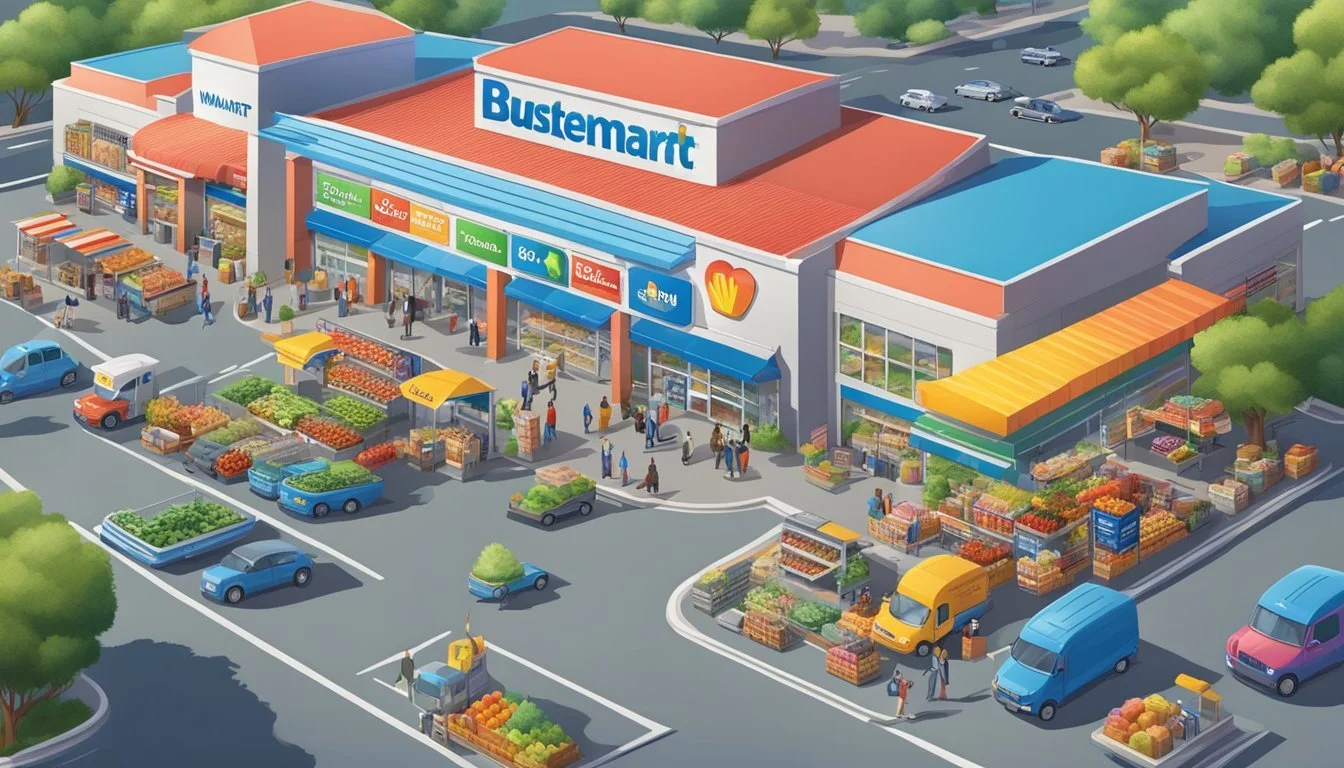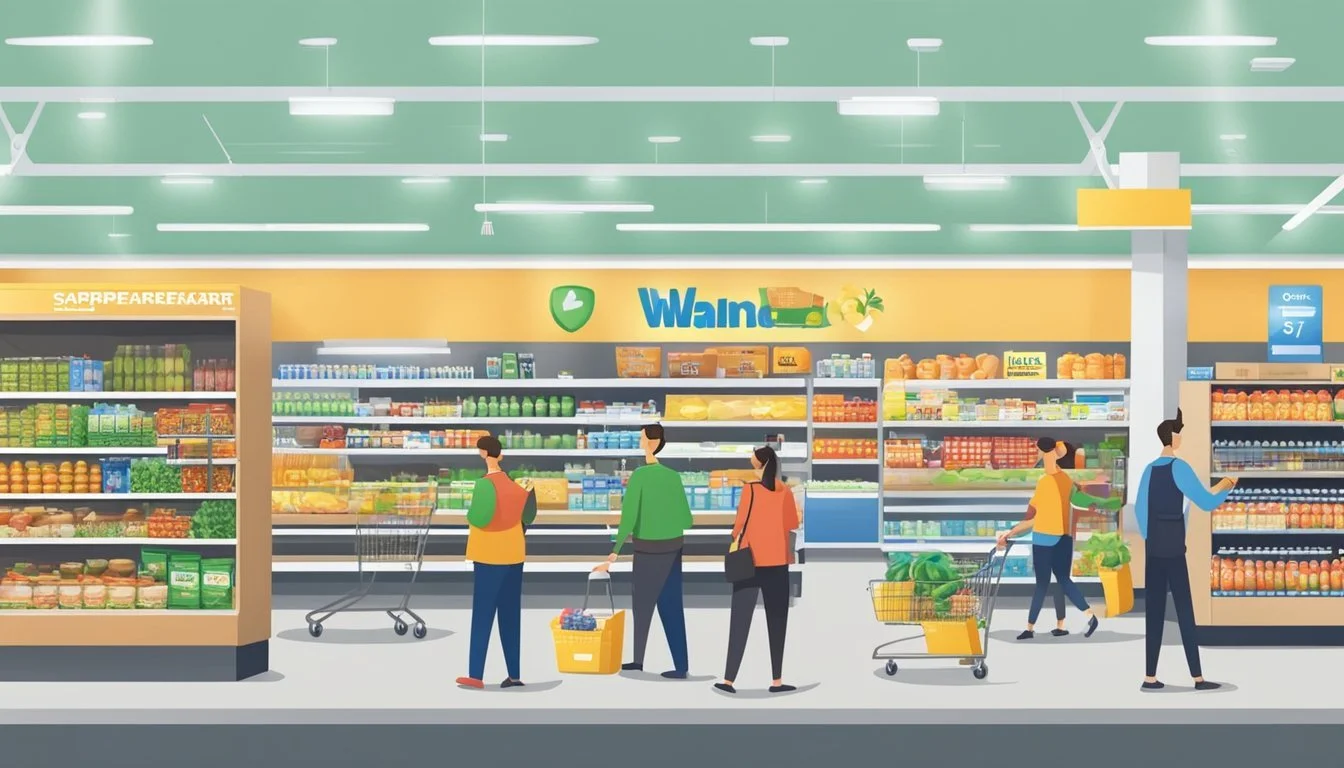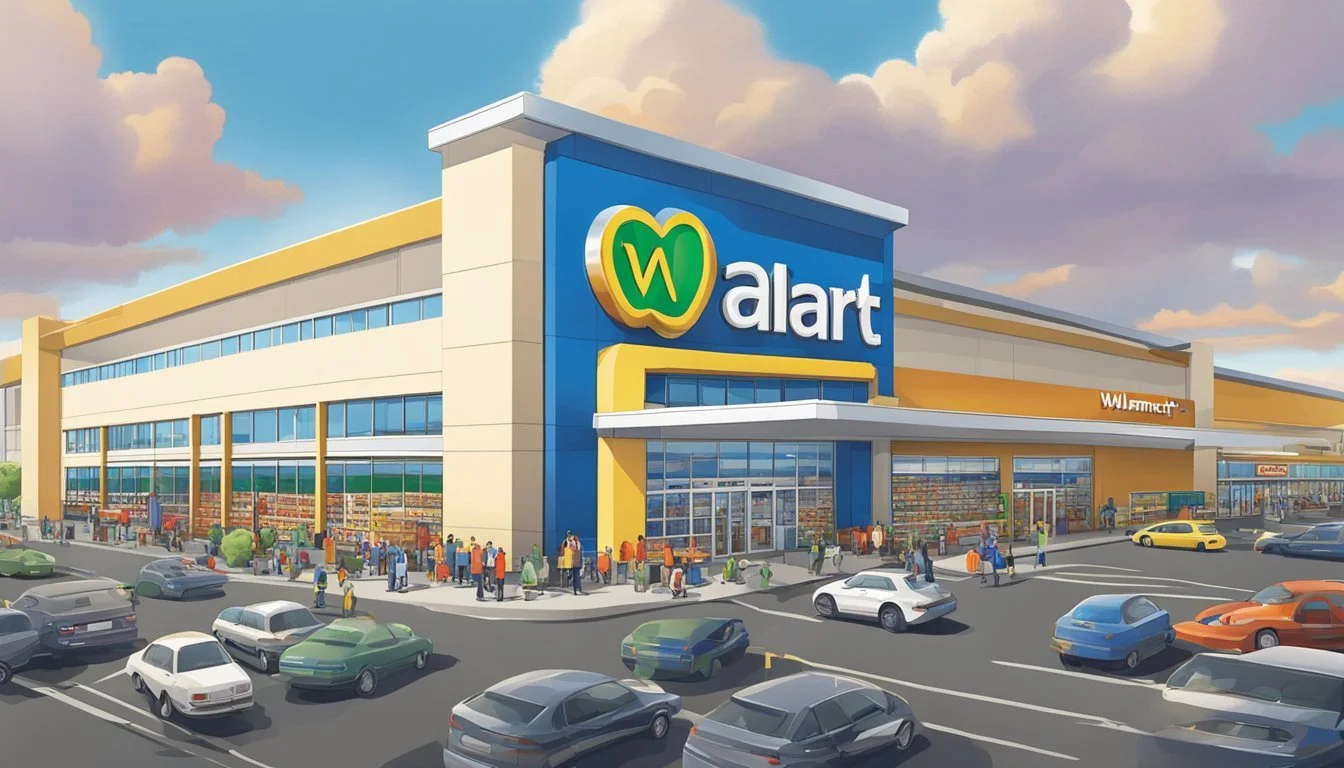Lucky Supermarkets vs Walmart
A Comprehensive Comparison of Prices, Quality, and Selection
Grocery shopping is a crucial part of our weekly routines, and finding the best store can save time and money. Lucky Supermarkets and Walmart are two popular options for many shoppers, each with its own strengths and weaknesses.
Walmart offers lower overall prices compared to Lucky Supermarkets, making it a better choice for budget-conscious consumers. A typical shopping basket at Walmart costs about $119.44, while prices at other major grocery chains tend to be higher. This price difference can lead to significant savings over time, especially for families who spend around $250 per week on groceries.
Lucky Supermarkets, on the other hand, may appeal to shoppers who prioritize a different shopping experience or specific product offerings. The choice between these two stores ultimately depends on individual preferences, including factors such as product quality, store layout, and customer service.
Company Profiles
Lucky Supermarkets and Walmart Supercenter are two prominent players in the U.S. grocery retail landscape. Both chains have distinct histories and approaches to serving shoppers.
Lucky Supermarkets: History and Overview
Lucky Supermarkets began as a single store in San Leandro, California in 1935. The chain expanded throughout Northern California, becoming known for its competitive pricing and wide product selection.
In 1998, Albertsons acquired Lucky's parent company, American Stores. The Lucky brand temporarily disappeared but was later revived. Today, Lucky operates primarily in Northern California under Save Mart Supermarkets ownership.
Lucky stores typically offer a full-service grocery experience with departments like produce, meat, bakery, and deli. The chain focuses on providing value to shoppers through competitive pricing and promotions.
Walmart Supercenter: History and Brand Evolution
Walmart Supercenter emerged from the original Walmart discount store concept. The first Supercenter opened in 1988 in Washington, Missouri, combining general merchandise with a full grocery section.
Founded by Sam Walton in 1962 in Rogers, Arkansas, Walmart grew rapidly. The Supercenter format allowed Walmart to become the largest grocer in the United States.
Walmart Supercenters are massive stores, often exceeding 180,000 square feet. They offer groceries, clothing, electronics, home goods, and more under one roof. The retailer is known for its "Everyday Low Prices" strategy and extensive private-label offerings.
Walmart has evolved its brand in recent years, expanding into e-commerce and enhancing its grocery pickup and delivery services to compete with online retailers.
Store Offerings Comparison
Lucky Supermarkets and Walmart both provide a wide range of grocery items, but their offerings differ in key ways. The two stores cater to different consumer needs through their product selection, private labels, and shopping options.
Variety and Availability of Products
Lucky Supermarkets focuses on a curated selection of groceries and fresh foods. Their produce section often features locally-sourced fruits and vegetables. The store's meat and seafood counters offer custom cuts and specialty items.
Walmart carries a broader range of products beyond just groceries. Their supercenters stock everything from electronics to clothing alongside food items. Walmart's grocery aisles contain a mix of national brands and budget-friendly options.
Lucky tends to have a more extensive selection of organic and natural products. Walmart compensates with a larger variety of packaged goods and household items.
Exclusive Brands and Partnerships
Lucky Supermarkets carries several exclusive store brands like "Lucky You" and "Pacific Coast Selections". These private labels span various categories including dairy, snacks, and household goods.
Walmart's private brands include "Great Value" for groceries and "Sam's Choice" for premium food items. The retail giant also partners with celebrity chefs and lifestyle brands to offer exclusive product lines.
Both stores work with local suppliers, but Lucky often emphasizes regional partnerships more prominently in their marketing and store displays.
Grocery Delivery and Online Shopping Options
Lucky Supermarkets offers online ordering and delivery through their website and mobile app. They provide same-day delivery in many areas and allow customers to earn rewards points on digital purchases.
Walmart's online grocery platform is more extensive, integrated with their broader e-commerce operations. They offer grocery pickup at many locations and partner with services like Instacart for deliveries.
Walmart+ members receive additional perks like free delivery on orders over a certain amount. Lucky's delivery service is typically limited to groceries, while Walmart allows customers to combine grocery and general merchandise orders.
Price Points and Affordability
Lucky Supermarkets and Walmart employ distinct pricing strategies to attract budget-conscious shoppers. Both stores aim to provide affordable options, but their approaches differ in key ways.
Everyday Pricing Strategies
Lucky Supermarkets focuses on competitive pricing for fresh produce and meat. They often run weekly specials on these items to draw customers. Walmart, on the other hand, emphasizes its "Everyday Low Prices" across all departments.
Walmart's massive purchasing power allows them to negotiate lower costs from suppliers. This translates to consistently low prices on many items. Lucky Supermarkets may have higher regular prices on some goods but compensates with frequent sales and promotions.
Membership Deals and Discounts
Lucky Supermarkets offers a free loyalty program that provides exclusive discounts and personalized deals. Members can earn points on purchases to redeem for future savings. Digital coupons are available through their app.
Walmart doesn't have a traditional loyalty program. Instead, they offer Walmart+, a paid membership service. Benefits include free delivery, fuel discounts, and early access to deals. For non-members, Walmart provides a price-matching policy on identical items.
Comparison of Common Grocery Items Prices
A price comparison of common grocery staples reveals mixed results. Walmart often has lower prices on national brand items and household goods. Lucky Supermarkets may offer better deals on fresh produce and store-brand products.
Milk prices:
Walmart: $3.27/gallon
Lucky: $3.49/gallon
Bread prices:
Walmart: $1.98/loaf
Lucky: $2.29/loaf
Eggs prices:
Walmart: $2.97/dozen
Lucky: $3.19/dozen
Generic staples like rice and pasta are competitively priced at both stores. Walmart's Great Value brand often undercuts Lucky's store brand options. However, Lucky Supermarkets frequently runs sales that can make their prices more attractive for savvy shoppers.
Quality Assessment of Grocery Products
Lucky Supermarkets and Walmart differ in their approach to product quality. Each store has its own strengths and weaknesses when it comes to fresh produce, meats, and organic offerings.
Fresh Produce and Meat Quality Analysis
Lucky Supermarkets emphasizes local sourcing for its produce. This results in fresher fruits and vegetables with shorter transit times. Their produce departments often feature seasonal items and regional specialties.
Walmart's produce quality can vary by location. Some stores have improved their fresh food sections in recent years. Walmart's massive scale allows for competitive pricing, but may impact freshness due to longer supply chains.
For meats, Lucky Supermarkets typically offers higher-grade cuts. They often have in-house butchers and a wider selection of prime meats. Some locations provide dry-aged beef options.
Walmart's meat department focuses on affordability. While the quality may be lower on average, they offer consistent pricing and popular cuts for budget-conscious shoppers.
Organic and Health-Focused Product Offerings
Lucky Supermarkets has expanded its organic and health-focused options. They stock a variety of organic produce, grains, and dairy products. Many locations have dedicated natural food sections with specialty items.
The chain also carries numerous gluten-free, vegan, and low-sodium products. Lucky's private label includes several organic and health-conscious options.
Walmart has significantly increased its organic offerings in recent years. They now stock organic versions of many staple items. Walmart's Great Value brand includes organic products at competitive prices.
However, Lucky Supermarkets generally provides a wider range of specialty health foods and alternative dietary options compared to Walmart.
Customer Experience and Service
Lucky Supermarkets and Walmart offer distinct shopping experiences, with notable differences in atmosphere, checkout efficiency, and customer support. These factors significantly impact the overall customer experience at each retailer.
In-Store Shopping Atmosphere
Lucky Supermarkets typically provides a more intimate and personalized shopping environment. The stores are often smaller and easier to navigate, with a focus on fresh produce and local products. Aisles tend to be well-organized and less crowded.
Walmart supercenters, in contrast, offer a vast selection across multiple departments. The sheer size can be overwhelming for some shoppers. However, the wide aisles and clear signage help customers find what they need. Walmart's atmosphere is more utilitarian, prioritizing efficiency and low prices over ambiance.
Checkout Efficiency and Technology Integration
Lucky Supermarkets generally maintain shorter checkout lines due to their smaller store size and customer base. They often have dedicated express lanes for quick purchases.
Walmart has invested heavily in technology to streamline the checkout process. Self-checkout kiosks are widely available, reducing wait times during peak hours. The Walmart app allows customers to scan items as they shop and pay directly through their phones, bypassing traditional checkouts entirely.
Both retailers offer online ordering and pickup services, but Walmart's broader technological integration gives it an edge in this area.
Customer Service and Support
Lucky Supermarkets often excel in personalized customer service. Staff members are typically knowledgeable about products and can offer individualized recommendations. The smaller store format allows for more direct interaction between employees and customers.
Walmart's approach to customer service is more standardized. While staff are trained to assist customers, the high volume of shoppers can sometimes lead to less personalized attention. However, Walmart's customer support extends beyond the store, with robust online and phone support options for issues related to purchases or services.
Both retailers have implemented customer feedback systems to improve their service quality. Lucky Supermarkets may be more responsive to individual customer concerns, while Walmart's large-scale operations allow for data-driven improvements across their entire network.
Geographic Presence and Accessibility
Lucky Supermarkets and Walmart have distinct geographic footprints across the United States. Their store distributions vary significantly between urban and rural areas, impacting accessibility for different customer segments.
National Footprint and Location Analysis
Walmart boasts a massive national presence with over 4,700 stores spread across all 50 states. Its extensive network ensures that most Americans live within 10 miles of a Walmart location. In contrast, Lucky Supermarkets operates on a much smaller scale, primarily concentrated in Northern California.
Lucky Supermarkets has approximately 70 stores, mainly in the San Francisco Bay Area and Sacramento region. This regional focus allows Lucky to tailor its offerings to local preferences but limits its accessibility to customers outside these areas.
Rural vs Urban Store Distribution
Walmart has a strong presence in both rural and urban areas. In rural regions, Walmart often serves as the primary shopping destination for entire communities. The company strategically places Supercenters in less populated areas, providing access to groceries and general merchandise.
Lucky Supermarkets predominantly operates in urban and suburban areas. Its stores are typically found in densely populated neighborhoods, catering to city dwellers and commuters. This urban-centric approach means Lucky is less accessible to rural customers.
Walmart's rural reach gives it an edge in serving underserved communities. However, Lucky's urban focus allows for more convenient locations in city centers, potentially offering shorter travel times for metropolitan shoppers.
Sustainability and Community Engagement
Lucky Supermarkets and Walmart have implemented various sustainability initiatives and community engagement programs. Their efforts focus on reducing environmental impact and supporting local communities through targeted outreach and partnerships.
Corporate Sustainability Initiatives
Lucky Supermarkets has made strides in sustainability by implementing energy-efficient lighting and refrigeration systems in their stores. They've also introduced a recycling program for plastic bags and packaging materials.
Walmart has set ambitious goals to achieve zero emissions by 2040 and use 100% renewable energy by 2035. The company has invested in solar and wind energy projects to power its operations.
Both retailers have committed to reducing food waste. Lucky Supermarkets partners with local food banks to donate unsold, edible products. Walmart uses advanced inventory management systems to minimize overstock and spoilage.
Community Outreach and Local Impact
Lucky Supermarkets focuses on supporting local farmers and producers. They feature locally-sourced products prominently in their stores and host regular farmers' markets in their parking lots.
Walmart's community engagement includes the Walmart Foundation, which provides grants to local nonprofits. The company also runs a disaster relief program, offering supplies and support during emergencies.
Both retailers participate in education initiatives. Lucky Supermarkets offers nutrition classes and cooking demonstrations in-store. Walmart provides scholarships and job training programs for local youth.
Lucky Supermarkets organizes volunteer events for employees to participate in community clean-ups and food drives. Walmart encourages its associates to volunteer through its VAP (Volunteerism Always Pays) program.
Market Position and Industry Impact
Walmart and Lucky Supermarkets occupy distinct positions in the grocery retail landscape. Their market strategies, consumer appeal, and industry influence differ significantly, shaping their roles in the competitive supermarket sector.
Competitive Landscape Analysis
Walmart dominates the grocery market with its extensive network of stores and formidable buying power. The retail giant captured 26% of the U.S. grocery market share in 2023, dwarfing most competitors. Walmart's scale allows it to offer consistently low prices, attracting budget-conscious shoppers.
Lucky Supermarkets, a regional chain primarily operating in Northern California, holds a smaller but loyal customer base. With approximately 70 locations, Lucky focuses on serving local communities with a mix of national brands and regional products.
Walmart's e-commerce growth surged 27% in Q1 2024, bolstered by its pickup and delivery services. This digital expansion strengthens its competitive edge against both traditional supermarkets and online grocers.
Consumer Trends and Brand Perception
Walmart's brand is synonymous with affordability and convenience. Shoppers often associate Walmart with:
Low prices
Wide product selection
One-stop shopping experience
Lucky Supermarkets cultivates a different image, emphasizing:
Community involvement
Fresh, quality produce
Personalized customer service
Consumer trends indicate a growing preference for value and convenience, benefiting Walmart's model. However, there's also increasing demand for locally sourced products and personalized shopping experiences, areas where Lucky potentially excels.
Ratings and reviews suggest Walmart scores higher on price and product variety, while Lucky tends to rate better on customer service and store atmosphere. These perceptions influence shopping choices and loyalty among different consumer segments.
Future Outlook and Growth Potential
Lucky Supermarkets and Walmart are poised for significant changes in the coming years. Both retailers are focusing on expansion strategies and technological innovations to stay competitive in the evolving grocery landscape.
Expansion Strategies and Future Plans
Lucky Supermarkets aims to strengthen its presence in existing markets while cautiously exploring new territories. The company plans to open 10-15 new stores annually over the next five years, primarily in California and Nevada.
Walmart, on the other hand, is pursuing an aggressive growth strategy. The retail giant intends to renovate 1,000 stores and open 150 new locations by 2026. This expansion includes smaller format stores to penetrate urban areas where traditional Supercenters may not fit.
Both companies are also investing in their e-commerce capabilities. Lucky Supermarkets is enhancing its online ordering and delivery services, while Walmart continues to expand its grocery pickup and delivery options.
Technological Innovations and Adaptations
Lucky Supermarkets is implementing advanced inventory management systems to reduce waste and improve efficiency. The company is also testing self-checkout kiosks and exploring the use of artificial intelligence for personalized customer experiences.
Walmart is leading in technological adaptations. The retailer is:
Deploying robots for inventory management
Implementing computer vision systems for checkout
Exploring drone deliveries for faster order fulfillment
Both companies are investing in data analytics to better understand customer preferences and optimize their product offerings. Lucky Supermarkets is focusing on localized data to tailor its stores to specific communities, while Walmart leverages its vast data resources for broader market insights.







